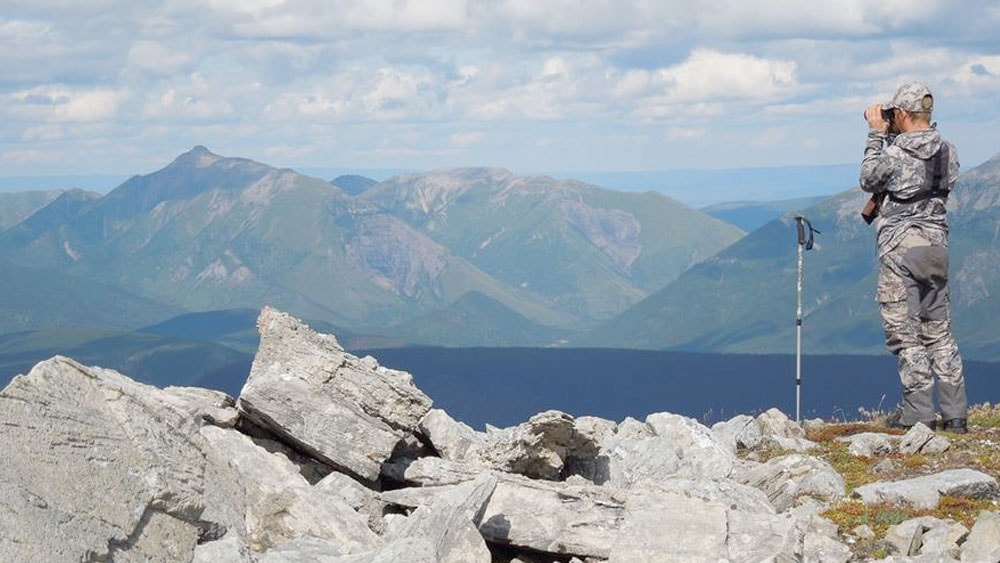During the summer of 2005 I found myself on top of a giant mountain in Northern British Colombia in pursuit of Stone sheep. It was my introduction to both a way of hunting and a way of life. At that time, I was unaware of the weighty impact this adventure would have on the years to come, but I did know I felt supremely alive — more than I ever had before — and I had a sense of belonging in the natural world that I’d never experienced until then. That trip proved to be the foundation for a set of feelings and values that have come to define me.
Looking back now over the near-decade and over 70 hunts I have guided, I’m amazed by all the memories I’ve made — memories of difficulties and trials, and also of the goals I’ve been fortunate enough to accomplish while ascending to great heights, all for the love of the hunt and everything that comes along with it. The memories that most move me are tied to the precious mountains: the wild species that reside in them, and the many great people I’ve met during my adventures amid the peaks.
Every chance I’ve had since that introductory trip, I’ve returned to the mountains. Though I now earn my living guiding hunters, I feel like I don’t work. Guiding has allowed me to spend the most time possible in an environment that offers profound challenges, yet inspires me to feel my most comfortable and — with the right gear — my most confident. In the mountains, my experiences are as dynamic as the landscape itself: I’m satisfied, yet I have a perpetual craving for more; I’m exhausted, yet I have a reserve of energy and excitement that is never wholly depleted. I don’t know exactly why I have this multitude of feelings, or why they persist in spite of the passage of time and the buildup of experience, but I do know that only the mountains inspire them. That’s why I always go back, again and again, and why I believe we mountain hunters — who are kind of an unusual breed — do what we do.

Perhaps hunter and journalist Jack O’Connor expressed it best: “Sheep hunters are romantics who love high places and solitude. To them the wild ram embodies the mystery and magic of the mountains, the rocky canyons, the snowy peaks, the fragrant alpine meadows, the gray slide rock, the icy dancing rills fed by snow bank and glacier, the sweet, clean air of the high places, and the sense of being alone on the top of the world with the eagles, the marmots, and the wild sheep themselves. The sheep hunter is willing to climb until his lungs are bursting, to walk until his legs are dead weary, to grow hungry and thirsty for great rewards.”

O’Connor had it right. What I experienced during that first foray in search of sheep was a small but addictive taste of all that he describes. As a guide, I’ve had many opportunities for subsequent tastes, each one deepening my understanding of the process, increasing my respect for the animals and their habitat, and strengthening my body and mind. It’s as much an emotional and intellectual experience as a physical one.
I became a guide for more than selfish reasons. I hope that all hunters get an opportunity like the one I had back in 2005 — to know the magic of the mountains, the allure of high places, and the joy that comes with great, hard-won rewards reaped among the rocky crags and in the clouds.

Whatever the mountains may bring to my life during the years to come, wherever the future leads, and however long my own particular journey lasts, there’s one certainty: I will continue to be a dedicated mountain hunter, with mind, body, and soul engaged in the challenges and relishing, as O’Connor says, the great rewards of this unique calling.
